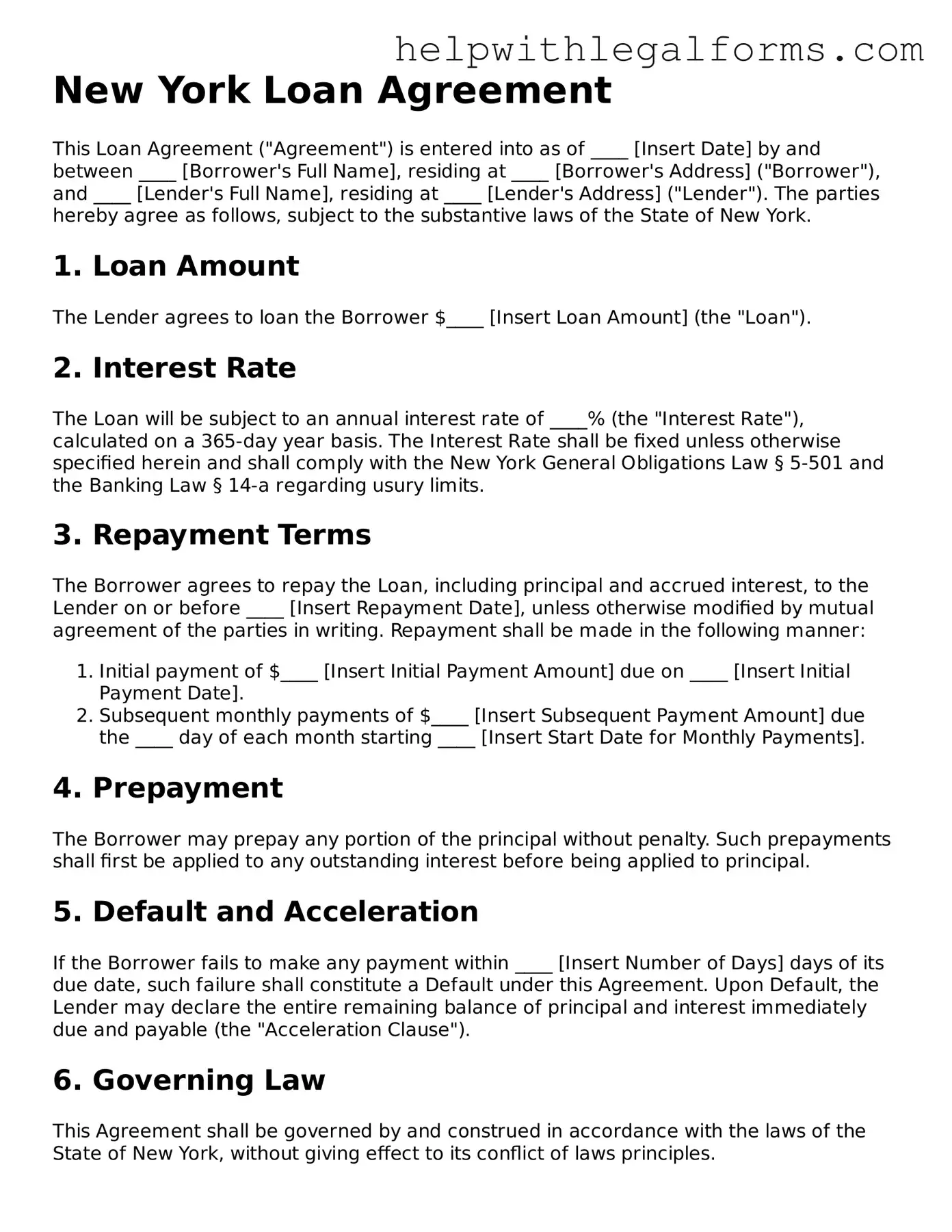What is a New York Loan Agreement?
A New York Loan Agreement is a legal document that outlines the terms and conditions under which one party (the lender) provides a loan to another party (the borrower). This agreement specifies the amount of the loan, interest rate, repayment schedule, and the obligations of both parties involved. Tailored to comply with New York State laws, it ensures that all transactions are conducted legally and transparently.
Who needs a New York Loan Agreement?
Anyone lending or borrowing money in the state of New York could need a loan agreement. This includes individuals, businesses, and entities engaging in financial transactions that involve lending money. Having this agreement in place helps protect both the lender's and the borrower's interests and ensures a clear understanding of the repayment terms.
What are the key components of a New York Loan Agreement?
The key components of a New York Loan Agreement typically include the loan amount, interest rate, repayment schedule, collateral (if any), parties' information, and any warranties or covenants. Additionally, it should outline the actions to be taken in the event of default, including recovery processes and grace periods.
How does one create a New York Loan Agreement?
To create a New York Loan Agreement, the lender and borrower must agree on the terms of the loan. These terms should then be documented in writing, outlining all the agreed-upon components of the loan. It is highly recommended to consult with a legal professional to ensure that the agreement complies with all state laws and adequately protects both parties' interests.
Is a witness or notarization required for a New York Loan Agreement to be valid?
While not always required, having a witness or notarizing a New York Loan Agreement can add an extra layer of validity and may help enforce the agreement should there be a dispute. It's advisable to consider the value of the loan and the relationship between the parties when deciding whether to involve a witness or a notary.
Can a New York Loan Agreement be modified after it's signed?
Yes, a New York Loan Agreement can be modified after it's signed, but any modifications must be agreed upon by all parties involved. It's crucial to document these changes in writing, and both the lender and the borrower should sign the revised document to ensure that the modifications are enforceable.
What happens if the borrower defaults on the loan?
In the event of a default, the actions that can be taken are outlined in the loan agreement itself. These actions may include initiating a collection process, seizing the collateral (if any), or taking legal action. The specific consequences depend on the terms agreed upon in the loan agreement and New York State law.
Are prepayment penalties allowed in New York Loan Agreements?
Prepayment penalties can be included in a New York Loan Agreement if both parties agree to them. However, the terms regarding prepayment penalties must be clearly stated in the agreement to ensure they are enforceable.
How does a New York Loan Agreement interact with other state laws?
While a New York Loan Agreement is designed to comply with New York State laws, when transactions involve parties from different states, federal laws and the laws of other states may also come into play. It's important to consider how these laws interact and consult a legal professional to ensure compliance across jurisdictions.
Where can one get a New York Loan Agreement template?
New York Loan Agreement templates can often be found online through legal services websites. However, it's important to ensure that any template used is up-to-date with current New York State laws. Consulting a legal professional to review or draft a loan agreement is always recommended to ensure its validity and enforceability.
